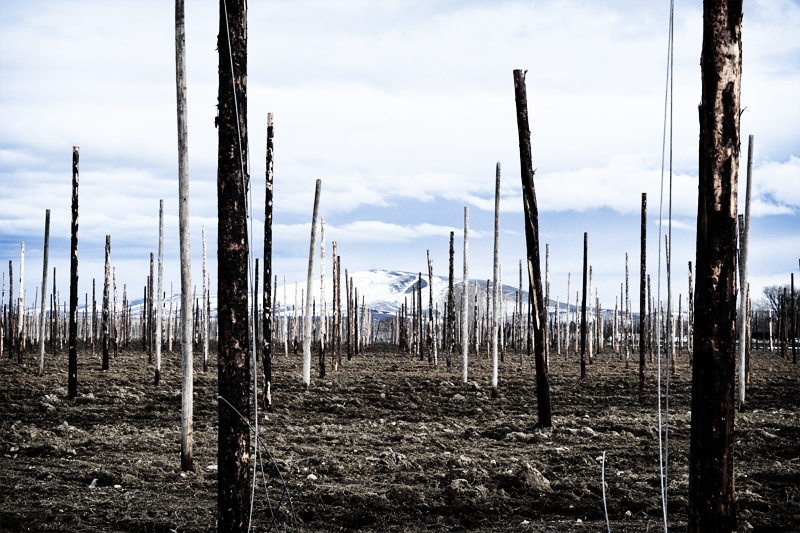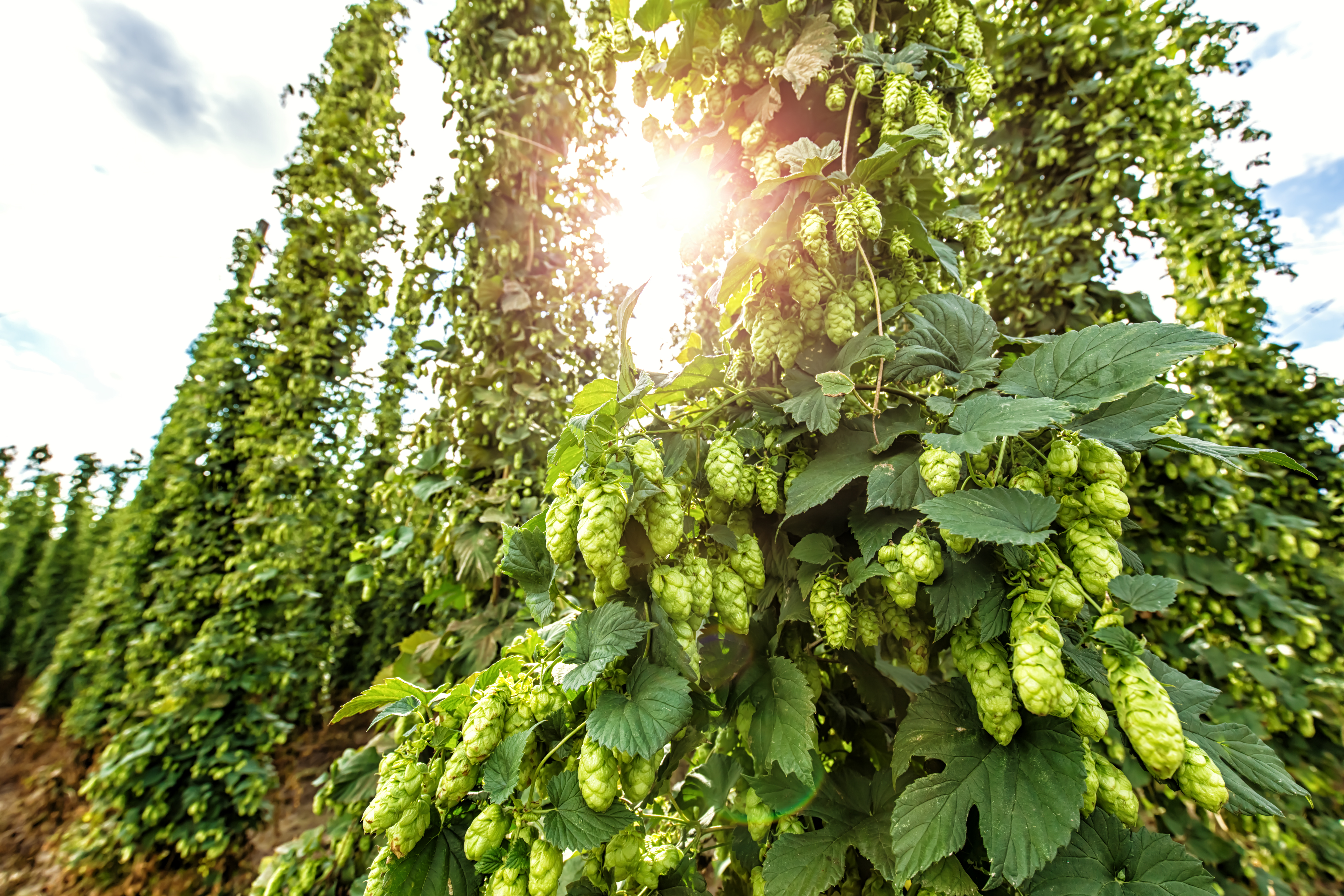Hop Farming
The Never-Ending Cycle of Planning, Growing and Caring for Hops

Yakima Valley hop fields. (Photo by Malissa Gatton)
At the end of February, the ground was too wet for Brian Tennis to get into his hop fields with heavy equipment.
“Right now it’s quiet,” he says, after months of snow falling, melting, falling and melting. “But we’ll be out there as soon as we can and then it’s [nonstop] until the harvest.” He is speaking from Omena, Michigan, 35 minutes north of Traverse City near the 45th parallel, in a part of the planet where hops thrive.
The annual hop harvest usually gets the most attention. And why not? It’s the endlessly Instagramable few glorious weeks at the end of summer when large, plump hop cones are stripped from the bine, starting their journeys into beer. At hop farms around the world, the air is thick with lupulin as workers toil to sort, pack and ready shipments. At breweries, the brewers rise extra early, waiting for overnight deliveries to arrive so they can make fresh- or wet-hopped beers. There are festivals that celebrate the harvest, and drinkers clink glasses in September and October to celebrate the bounty bursting forth from their fresh-hopped IPAs.

(File Photo)
But months before, there is much to be done in the cold fields. It’s all to make sure the harvest is successful. What farmers do in the offseason is crucial to a positive yield in the late summer.
The labor includes everything from fixing broken poles and hanging rope to servicing tractors and other equipment, logistically mapping out fields, working in greenhouses and preparing for new rhizomes.
“You look out there now and all you see is poles and brown foliage. It’s definitely less glamorous,” Leon Loza Jr. of Loza Farms in Wapato, Washington, says in early March, before the outdoor work begins in earnest. “Obviously the harvest can’t happen without this preparation, this work.”
Loza Jr. is a second-generation hop farmer. His father started working on this Yakima Valley farm in the 1970s and bought the 350-acre land that now bears the family name in 2006. Loza Jr. spent his youth working various jobs on the farms, often the least-glamorous, and while the money was great—especially when he was in high school—there’s a lot he doesn’t miss.
In a few weeks someone will be on the open-cab tractor pulling a harrow. The tool is used to break up soil, pull up old vegetation and prune. It’s a dusty and unpleasant job to pull around the heavy, 8-foot by 10-foot metal frame.
“It’s a rough ride. It literally shakes the battery out of the tractor. After a few days you feel like your kidneys are going to fall out,” says Loza Jr. “It’s good for the ground, makes it harder for mildews to grow, and the process is old-school compared to what other folks do, but we’ve always done things a certain way. That’s how we were taught to do it.”
After the harvest, farmers will wait until the first frost and then cut away growth on the bines, and cover with compost and other nutrients to let them soak in during the winter. Spring calls for a fresh round of fertilizing, which is often the first thing farmers do, especially when using fertilizers like chicken manure, which can take several weeks to decompose. When the ground is ready, it’s time to make sure that irrigation is installed and running smoothly. Farmers also take preventive steps to inhibit mildews and pests from harming the hops.
When it comes to planning or getting existing rhizomes ready to grow, much depends on the variety and how they best thrive. Because of the brutal winters in Michigan, where the hop industry is relatively new, most of Tennis’ plants spend the winter gaining strength and getting ready for the ground in greenhouses.
“We want to try and plant hops that are a year old,” says Tennis, “so we get a good harvest the first year. Planting strategy starts the year before for us. Sometimes longer.”
It’s a different story in Yakima and other established hop-growing regions. There, rhizomes that had been planted in years past—sometimes taking several years to mature into fully harvestable strength—are cut back to foster fresh growth.
From there, it’s daily, sometimes hourly monitoring, to make sure the hops reach full potential.
“The hard work never stops,” Tennis says. “It’s a full-time profession three hundred and sixty-five days a year. We don’t take time off during the winter. If we’re not fixing, we’re at a conference or giving a talk. It never stops.”
John Holl
John is the editor of All About Beer Magazine and the author of three books, including The American Craft Beer Cookbook. Find him on Twitter @John_Holl.

I would like to venture into hops farming. I am based in Kenya and my farm is along the Nandi Hills escarpment around Miwani/Chemelil/Muhoroni area of Nyanza. How can i go about this?
please give your physical contact and phone contact information.